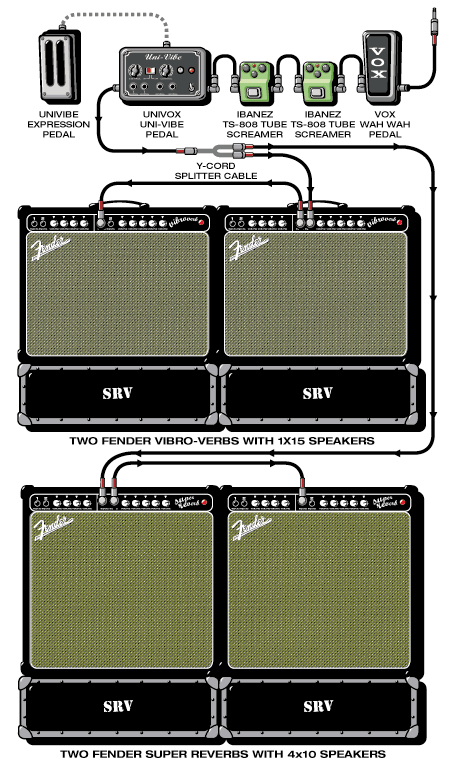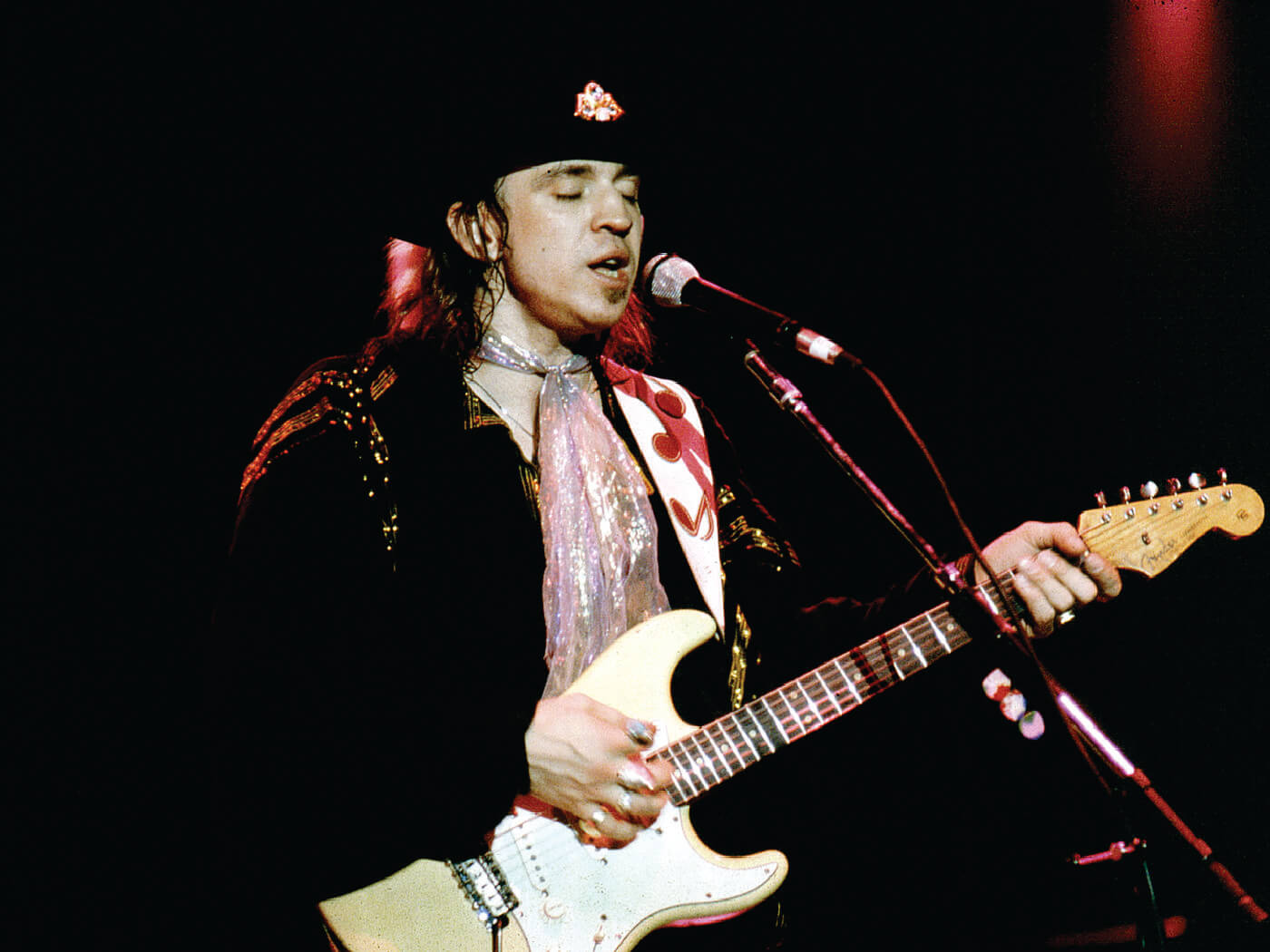

"They were all leaning against the wall and they were tied up, and at the end of the show, as we were changing sets for Joe Cocker, the stagehands were pulling the curtains and one of these huge baffles came crashing down on my workstation, where the guitars were set up. The venue had these acoustic baffles for when orchestras would play, and they were monsters, maybe 20 or 30 feet tall and six or eight feet wide. For that show at the Garden State Arts Center, we were on first. "We were doing a co-headlining tour with Joe Cocker. Somewhat ominously, there was an accident in New Jersey during a show, just a few weeks before Stevie's death, that almost destroyed Number One. Lenny seemed to make this sound the best for him." "What he would do is, he could strike the strings near the tuning machines, then he would use the tremolo arm to make a kind of weeping sound. Different guitars have different tones, and this one seemed to really work for that song. It was a special guitar because it could scream and chime. He used it on a lot of different songs, but I especially remember him using it on the recording of Riviera Paradise.

It was a different color and it had a maple neck. "Lenny was given to Stevie by Lenny and some friends.

What was the main difference between Number One and the Stratocaster known as 'Lenny'? He looked at me and said, 'How do you think up these things?' And I just said, 'Well, I'm your guitar tech. Once we started experimenting, he was pretty happy. "I told him that we could get the same tone by setting his guitar up differently and using some different things. I saw some blood on the guitar one day and I said, 'Hey, are you OK?' And he said, 'Aw, my tips are starting to get cut, you know.'" "Even so, the guitar was hard to play, and he would literally be drawing blood from the tips of his fingers. I asked him about it once and he just said, 'I can't sing in E it's gotta be in E-flat.' Plus, he had his guitar tuned to E-flat, which compensated for other variables. He had very strong hands the way he attacked the guitar, it all came from his hands. "Yeah, well, it's just the way he liked to get his tone. Most players would ask for slinky strings and for their action to be set low. I used to adjust the screws down at the bridge to raise the height, and I would run out of thread - I couldn't make the strings any higher."Ī lot of this runs counter to the way many guitarists like their instruments set up, particularly players who favor bending strings. They were big, yes, but that wasn't the only thing it was the action, the height of the strings. He enjoyed them - they gave him more access to sliding up and down." He used to use medium-sized frets, but he'd wear them out, so I said, 'You're probably better off with jumbos.' That way, I could work with them through the year, reshape them so he could continue to play. You used to put jumbo-sized frets on the guitar, right? But I never got a chance to do that, so the neck that is back on Number One is all original." We decided to replace the neck and keep the original until I had time to made that repair. "After a while, the fingerboard was getting thin and I told him I'd have to put a new one on. He would really dig in he not only wore the frets out, but he would wear out some of the wood, as well.

He asked me why and I told him that I had to plane to fingerboard every time I put new frets in. "The last time I refretted it, I told him it would be the last time. You can't use the same nut once you refret the guitar - the action would be too low. I joined Steve in 1985 and I refretted the guitar maybe once a year, and I replaced the ivory nut probably as many times. I refretted it and I put in a bone nut, or an ivory nut. "The term 'repair' can mean a lot of things. I know you did a lot of repairs to the neck of Number One… Giving Number One a behind-the-head workout, 1983 © Lynn Goldsmith/Corbis My attitude was, 'Hey, it's your guitar, you can call it whatever you want.'" The reason why he called it a '59 was because of some wiring in it - the back of the pickups said '1959.' So the pickups were a '59, but the body of the guitar was a '62. Now, Number One was a '62 Strat, but Stevie was fond of calling it a 1959 model.
#Stevie ray vaughan guitar rig install#
He had had somebody install a left-handed tremolo system, even though he was a right-handed player."īecause he wanted to emulate Jimi Hendrix? The guitar was pretty beat up, even then, showing a lot of wear and tear. It was the Number One Fender Stratocaster. What was the first guitar Stevie brought in to you, the Number One Strat? In the following interview, Rene Martinez recalls working with Stevie Ray Vaughan, detailing the specifics of the Number One guitar and Vaughan's live rig and speaks eloquently about the legendary bluesman he came to think of as a friend as well as a boss.


 0 kommentar(er)
0 kommentar(er)
